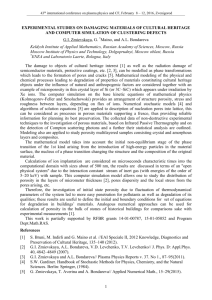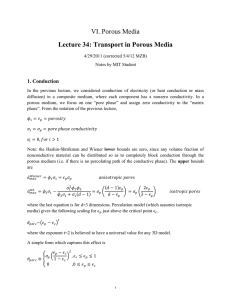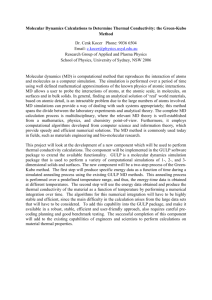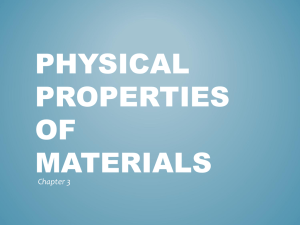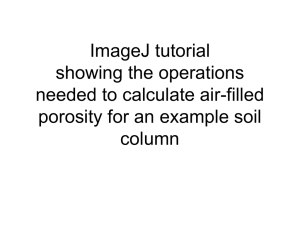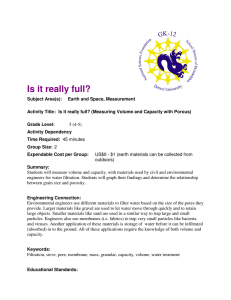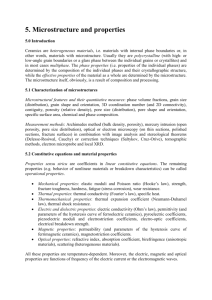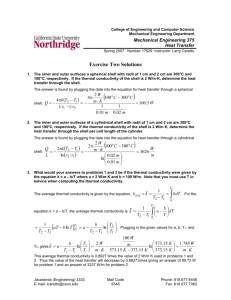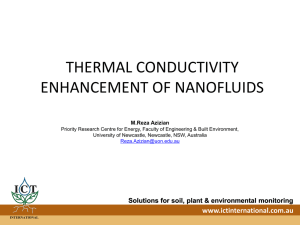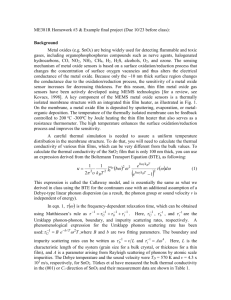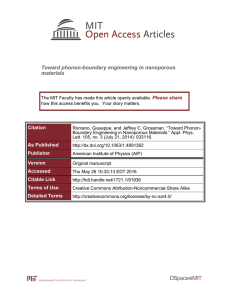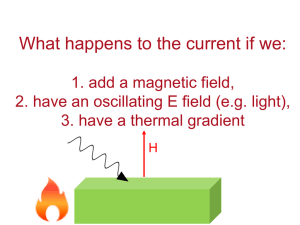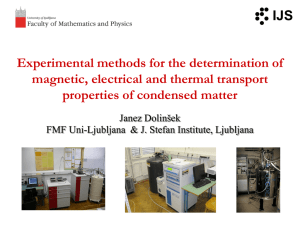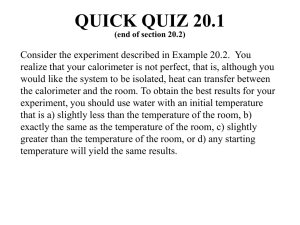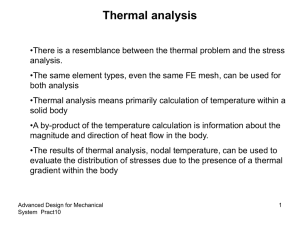Talk-LB-19.1.6
advertisement
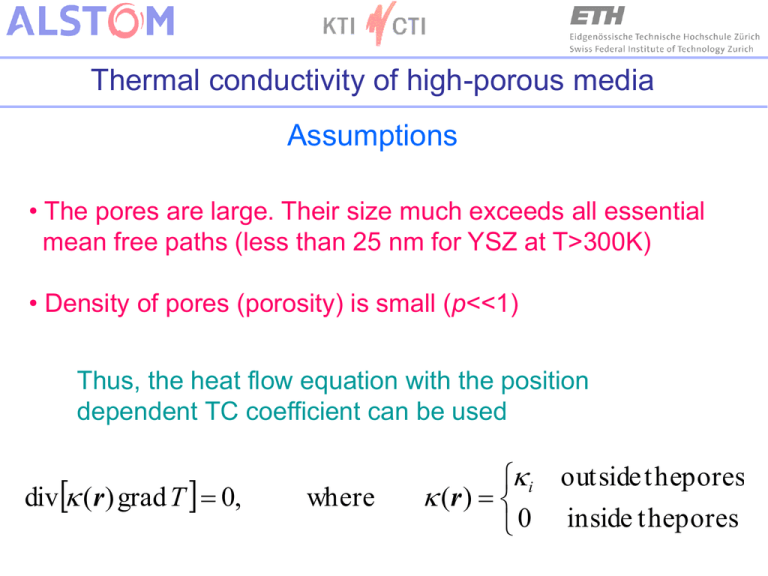
Thermal conductivity of high-porous media
Assumptions
• The pores are large. Their size much exceeds all essential
mean free paths (less than 25 nm for YSZ at T>300K)
• Density of pores (porosity) is small (p<<1)
Thus, the heat flow equation with the position
dependent TC coefficient can be used
div (r ) grad T 0,
where
i
(r )
0
outside thepores
inside thepores
heat flux
Thermal conductivity of high-porous media
z
T2
T1
TC of a homogeneous media:
QL
S(T2 T1 )
Q - heat flux, S - cross-section
heat flux
L
z
T1
T2
L
Average TC of a non-homogeneous
media:
L
(r)grad T dS
S(T2 T1 ) zconst
Thermal conductivity of high-porous media
Approach
TC is considered as a sum of its average and fluctuating components:
(r ) i (1 p) (r )
(r ) is a random value. The results are evaluated via the average
(r )(r' ) , which depends only on the distance between the points r and r’
For spherical pores, it is possible to assume:
(r ) (r ' ) e
( x x ') 2 ( y y ') 2 ( z z ') 2 / R
For non-spherical pores or cracks, it is possible to assume:
(r)(r ') e
( x x ')2 ( y y ')2 2 (z z ')2 / R
parameter 0 determines ratio of the crack dimensions
Thus, ≈ 1 for the pore, <<1 and >> 1 for the cracks of
different orientations
Thermal conductivity of high-porous media
Results
i [1 p(1 J )]
J
1
4
W ( r )
z
z
d 3r ,
3
r
W (r )
where
(0) ( r )
(0)2
Spherical pores
W ( r ) W ( r ),
J
1
3
Anisotropic pores (microcracks etc.)
W ( r ) W ( x 2 y 2 2 z 2 ),
1
sin
1 ,
1
3
/
2
(1 ) (1 )
J J ( )
ln 1 , 1
3/ 2
(1 ) ( 1)
Thermal conductivity of high-porous media
i {1 p[1 J( )]}
(1)
heat flux
(= 1 - pore, vary or small - crack)
heat flux
Results
1
1
Equation (1) with J = 0.3 and p as a total porosity can be used to
consider TC for all types of porosity
Thermal conductivity of high-porous media
Comments
1. TC was found to be depended on the porosity, but
independent of the pores size. This is the consequence of the
model, which has not been assumed initially. This fact is
confirmed experimentally [1].
2. The value of the factor J=1/3 for the spherical pores has been
obtained also in Ref. 2 and confirmed experimentally [1]. The
close value J=1/2 has been tested in [1,3].
3. The effect of anisotropy of TC along and across the plasma
sprayed PSZ coating was found to be small in two different
models of simulations [4] in agreement with Eq. (1).
References
1. K. Schlichting, N. Padture, P. Klemens. J. Materials Sci. 36, 3003 (2001)
2. K. Schlichting, N. Padture, P. Klemens, in “Thermal Conductivity 25” ed. By C.
Uher and D. Morelli (Technomic, Lancaster, PA, USA, 2000) p.162
3. S. Raghavan et al.,Scripta Materiala 39, 1119 (1998)
4. Z. Wang et al., Acta Materialia 51, 5319 (2003)
Thermal conductivity of high-porous media
Unclear questions and Next steps
- Is it possible to consider porosity p = 0.3 as small?
Yes, because it results in correction ~p/3<<1
No, the porosity p=0.7 means total destruction of the coating
- What value should be used as i ?
As the first approximation the intrinsic (defect-free) TC can be
used; nevertheless, the effect of the grain boundaries should be
testified.
1. Possible breaking bounds of the p<<1 approximation should be
investigated
2. The radiative component of TC should be considered
3. Experimental data of TC measurements for the specimens of
different porosity are necessary to check Eq. (1)

